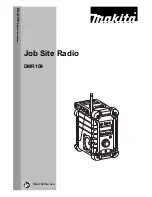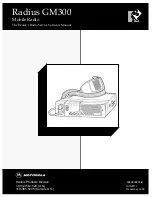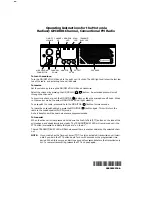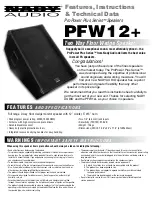
21
WEATHER ALERT
Weather Alert is a safety function that allows the radio to monitor the
local weather channel for NOAA Weather Alert broadcasts, while
allowing you to listen to other channels.
The traditional weather feature receives weather broadcasts (usually
within a 50-mile radius) then sounds an alarm if the emergency tone is
transmitted. This means that people who live outside an affected area
are often alerted even when their area is not affected, causing many of
them to ignore potentially real emergency/weather warnings that can
save lives.
ABOUT S.A.M.E. WEATHER ALERT
In 1994, the National Oceanic and Atmospheric Administration (NOAA)
began broadcasting coded signals called FIPS (Federal Information
Processing System) codes along with their standard weather
broadcasts. These codes identify an emergency and the specific
geographic area (such as a county) affected by the emergency.
The
VHF500
was developed with the SAME (Specific Area Message
Encoding) technology. This allows your radio to receive, interpret, and
display the information about the codes so you can determine if the
emergency might affect your area.
Each FIPS code identifies a specific geographic area (defined by the
National Weather Service), so your radio sounds an alert only when an
emergency/weather emergency is declared in those locations. This
helps you more efficiently track the emergency/weather conditions in
and around your area.
When the VHF500 receives a weather alert:
• It sounds an alert siren.
• A description of the alert appears.
The alert descriptions your radio can display are based on a list of
specific weather alert types published by the NWS (National Weather
Service). For a list of all the alert descriptions that your radio can display.
Please see the NWR-SAME EVENT CODE section of this manual.
Caution:
The NWS uses sophisticated weather models to determine an
alert’s effective time. However, the end of an alert does not
necessarily mean that the related weather emergency is over.
UT01920ZB_0 8/16/05 12:34 PM Page 21















































